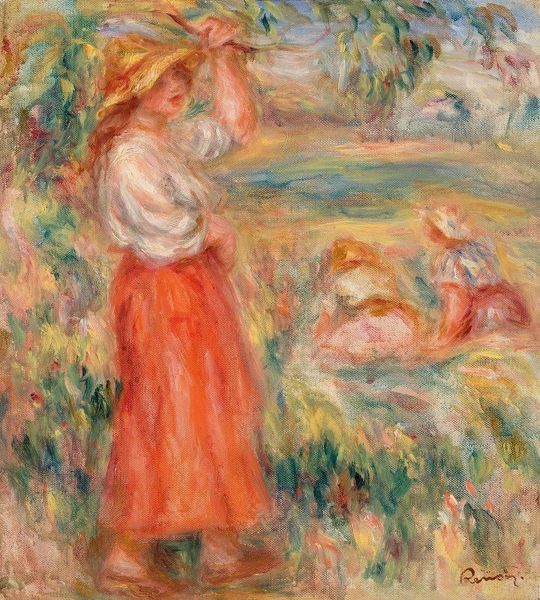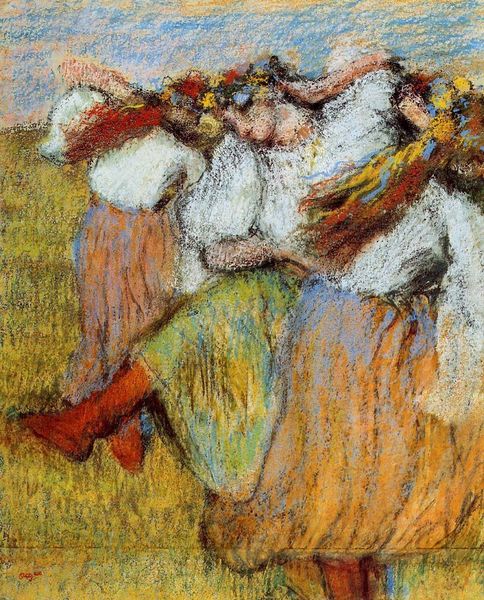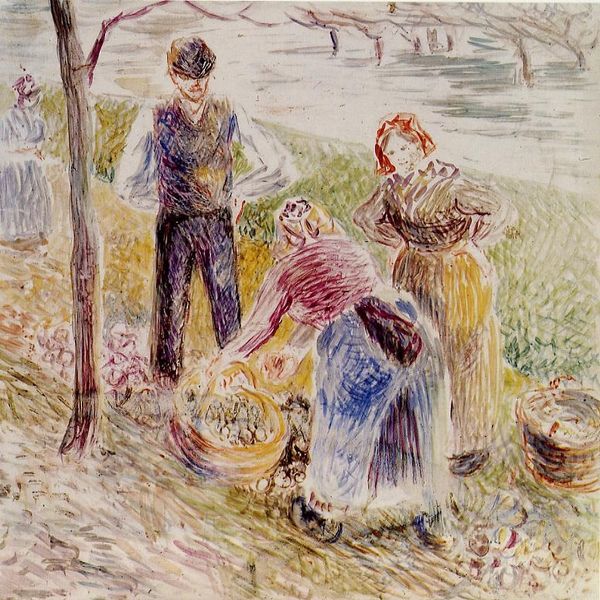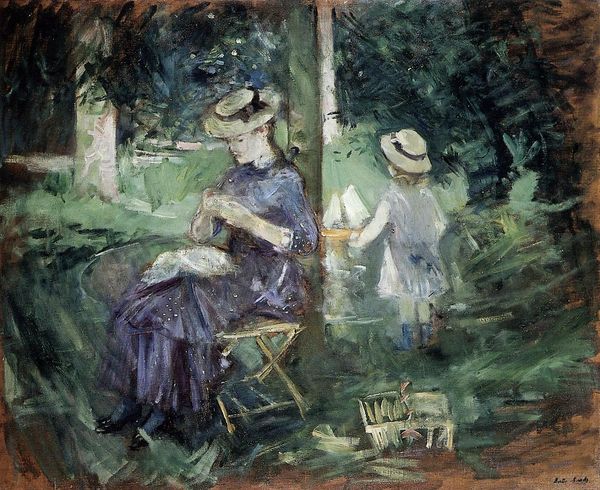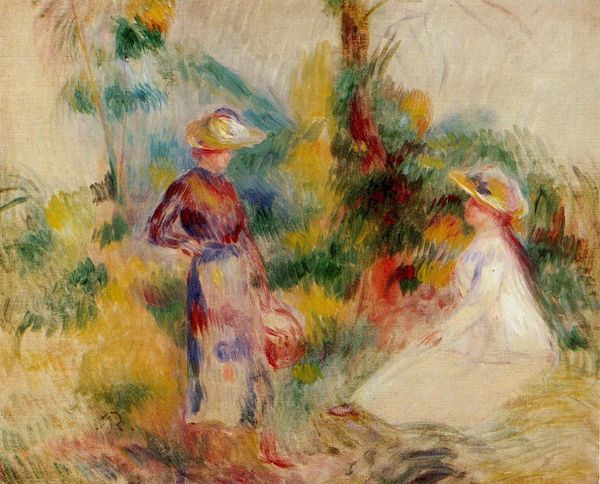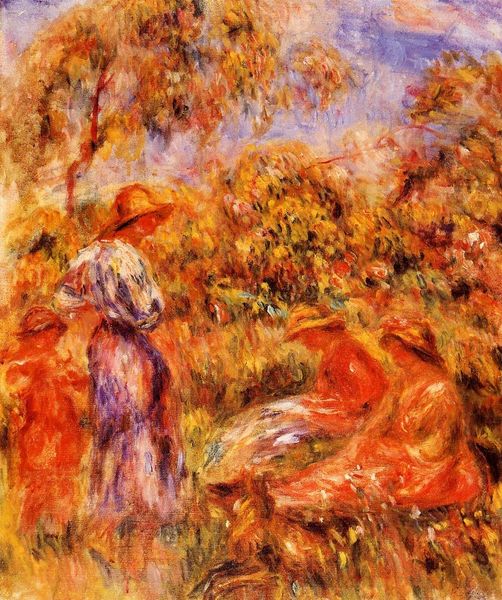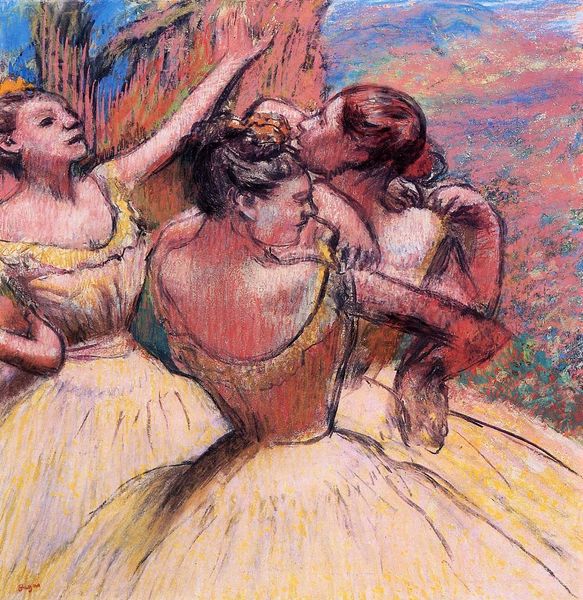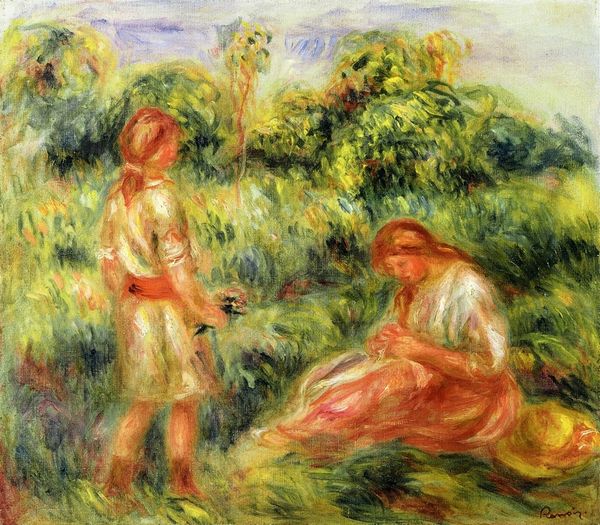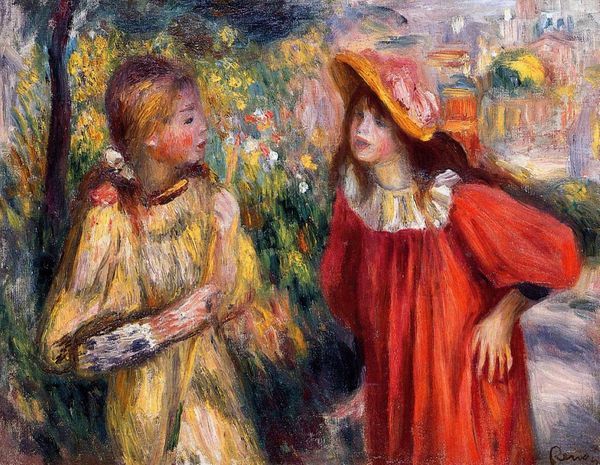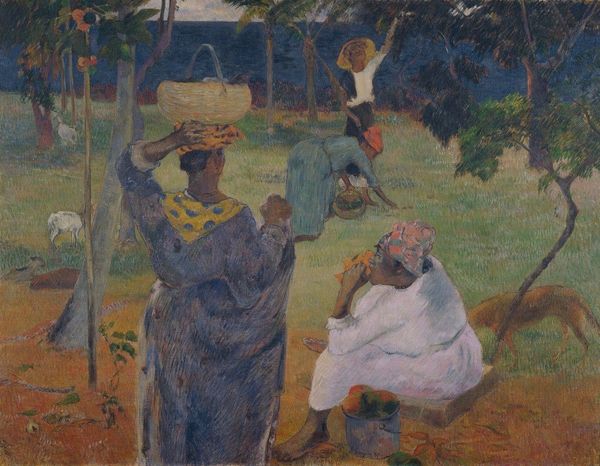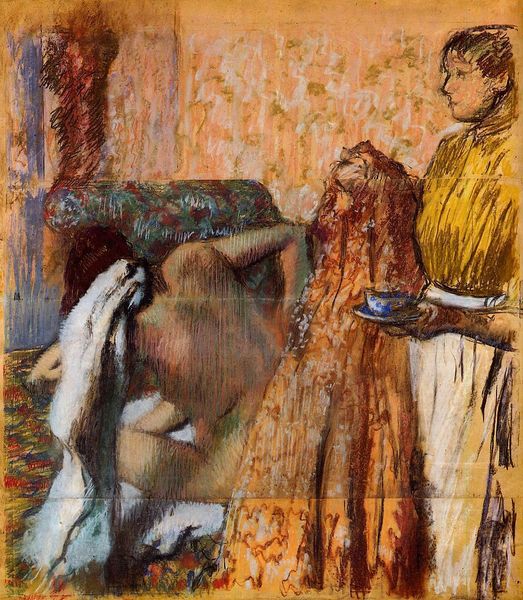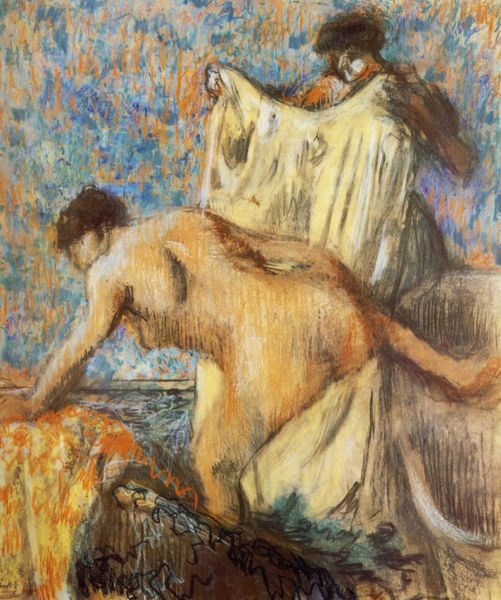
Copyright: Public domain
Curator: Degas created this portrait, "Madame Alexis Rouart and Her Children," around 1905, here at the Petit Palais. The work seems to show a family in a moment of repose, yet there is tension evident in the composition and figure placement. What do you make of this use of pastels, at first glance? Editor: There's an undeniably unsettling feeling. It's mostly in the arrangement and rendering. Look at the stark chair cutting off our access to the woman leaning in it—the picture space becomes fractured and uneasy. Curator: I agree, and it's important to understand the Rouart family’s place within Parisian society. Alexis Rouart was himself an artist and industrialist, very well-connected in the art world. Degas portrayed them not as idealized figures, but with a sense of psychological depth, wouldn’t you agree? This style was almost certainly a reflection on that sphere. Editor: Absolutely. I find myself dwelling on the woman seated. There’s almost a classical contour, like a Ingres odalisque, yet she appears to be fading back into the sketch. Even the texture of the work, charcoal or pastel on paper, conveys this transient feeling, far from traditional, formal oil painting of a prominent family. Curator: Indeed. Degas consistently challenged conventional portraiture, even in depictions of powerful people, emphasizing fleeting moments over posed formality. One could view the family’s composition—separated, looking away—as mirroring the complex, sometimes isolating experience within a prominent bourgeois family at the turn of the century. Editor: The flattened perspective enhances the claustrophobia as well. Everything seems compressed and pushed to the foreground. While the visible strokes and layering invite a sense of openness in terms of technique, the compositional arrangement ultimately restrains the gaze. Curator: What might these techniques reflect about how artists, then and now, portray women of that time and rank? Editor: The lack of idealized features almost democratizes the medium. Still, even while focusing on structure and technique, context remains critical in its construction, of course. Curator: That's very well said. "Madame Alexis Rouart and Her Children," offers insights into family, representation, and societal norms of its period. Editor: A powerful visual study that continues to prompt discussion about artistic intention and social commentary through unique style, texture and composition.
Comments
No comments
Be the first to comment and join the conversation on the ultimate creative platform.

